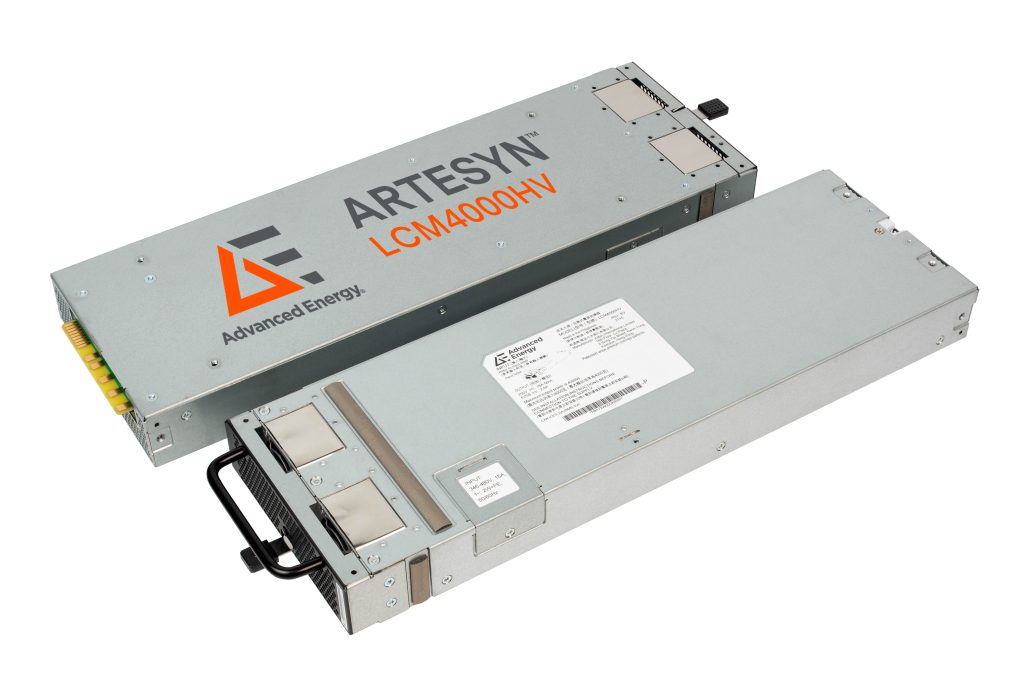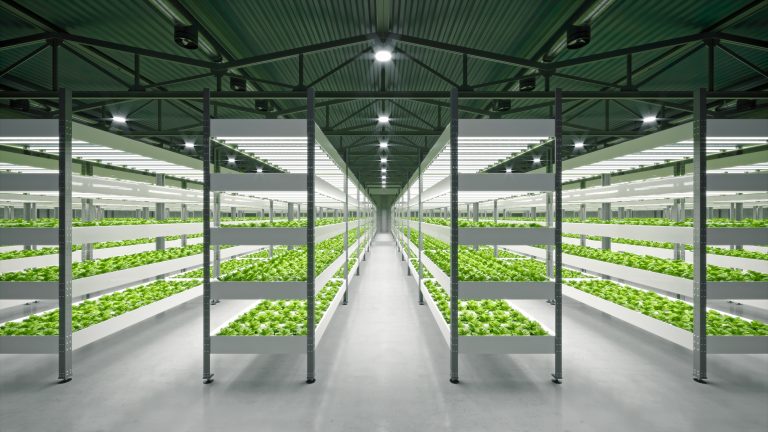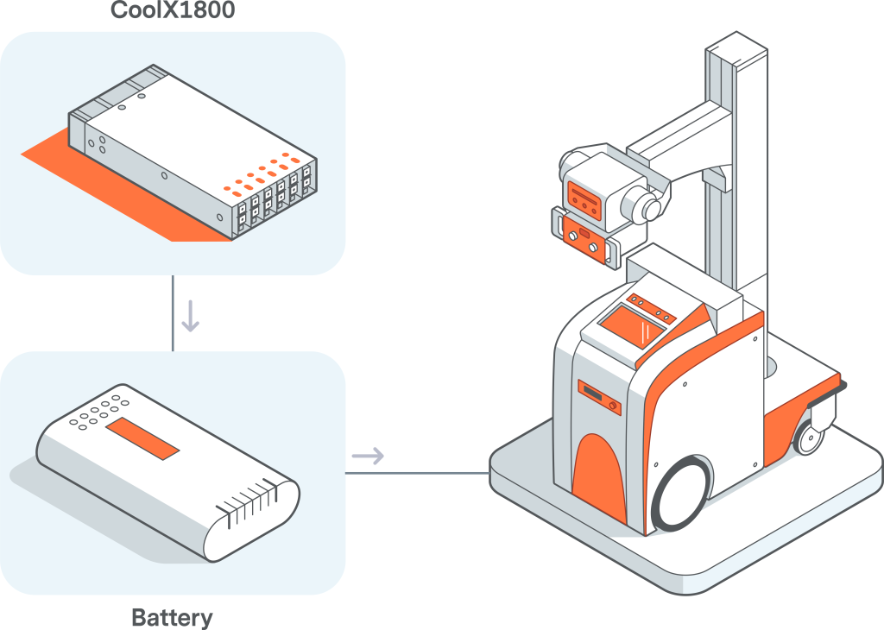Rising Energy Costs Drive New Power Solutions for European Indoor Growers
Veröffentlicht März 31, 2023 von Joe Voyles
Key Takeaways:
- Vertical farming has grown significantly due to stable crop production, ease of harvesting, and consumer demand for local products.
- The market is expected to reach USD 9.7 billion by 2026.
- Controlling energy costs, which can account for up to 60% of total expenses, remains a major challenge.
- Rising energy prices, especially in Europe, have led to industry consolidation and a focus on operational efficiency.
- Innovations in LED lighting and centralized power supply architectures, such as Advanced Energy’s Artesyn® LCM4000HV series, are helping to reduce energy consumption.
- These systems offer high efficiency and reliability, crucial for maintaining profitability in the energy-intensive vertical farming industry.
Driven by factors ranging from high-yield, stable crop production and ease of harvesting to population growth and consumer demand for locally sourced products, vertical farming has seen significant growth in recent years. According to industry analysts this success is set to continue. Market research firm Markets and Markets, for example, expects the global vertical farming market to grow from USD 3.1 billion in 2021 to USD 9.7 billion by 2026, at a CAGR of 25%.
While vertical farming offers many advantages, one of the key challenges that growers face is controlling costs – especially when it comes to the rising and increasingly unpredictable cost of energy.
Though traditional farming is prone to the vagaries of the climate, the energy used for growing –sunlight – is effectively free. Vertical farming, on the other hand, is an energy-intensive business with electricity representing as much as 60% of a facility’s total costs. Depending on the crops grown, up to 90% of the electricity consumed will be used to create the environment.
As an example, growing rocket/arugula or romaine lettuce in vertical farms requires 183.2 W per square meter of growing area, of which 90 W (49%) and 66 W (36%) respectively come from LED lamps and air conditioning. Keeping energy costs as low as possible, therefore, has always been an important objective for vertical farmers.
Now, however, that objective has become even more critical as the cost of energy rises. As a net energy importer, these cost increases have been felt acutely in Europe because of rising wholesale energy prices. These rises have been driven in part by the war in Ukraine and in part by the summer heatwaves that led to increased demand for energy. As a result, the price of energy in the EU reached record levels in 2022.
The fallout from this has had a dramatic effect on vertical farming strategies in Europe. Many companies have made significant cutbacks and a number of small players could no longer turn a profit and have simply gone out of business. At the same time, there has been increased industry consolidation as larger players use mergers and acquisitions to mitigate costs through economies of scale.
Across the board – but in particular at older facilities that may not be using the most modern technologies – there have been urgent reviews of operational efficiency and initiatives to seek out new solutions that can drive down energy costs without impacting crop yields.
Delivering More Efficient, Less Energy-Intensive Growing
Of particular importance to energy efficiency is the way that the LEDs that provide the ‘artificial sunlight’ are powered.
Conventionally, most LED installations consisted of multiple LED luminaires, each of which had its own dedicated power supply, or driver, which converts AC power to DC power necessary to drive the LED luminaire. This approach supported ease of control but produced heat in the growing area that required cooling during warm periods.
Later approaches addressed this by using a single centralized power supply unit (PSU) set to a high DC voltage delivering a constant current into a string of luminaires. By allowing lower currents, the increased voltage improves efficiency through reduced I2R losses. This centralized approach to LED lighting improves energy savings by up to 10.5%. In addition, because the PSU can be placed outside the growing area, excess heat can be vented to the outside world in summer or channeled into the growing area in winter, reducing HVAC electricity by 6%.

One drawback of the series configuration is that the failure of a single luminaire can shut down all luminaires in the string. This can be addressed through further adoption of the centralized power supply architecture that allows for higher voltage luminaires to be configured in parallel, as shown above.
Power Supply Technologies for Centralized Architectures
Getting the lowest energy use and lowest operating cost operation from a centralized approach demands power supply technologies that operate with very high levels of efficiency and are optimized for growing applications.
 Advanced Energy’s Artesyn® LCM4000HV series and LCM12K mounting shelf, for example, have been designed specifically for horticulture applications and are fully compliant with DLC (DesignLights Consortium) technical requirements for horticultural lighting (Version 2.1) as they apply to remote power sources.
Advanced Energy’s Artesyn® LCM4000HV series and LCM12K mounting shelf, for example, have been designed specifically for horticulture applications and are fully compliant with DLC (DesignLights Consortium) technical requirements for horticultural lighting (Version 2.1) as they apply to remote power sources.
A unique input design allows all standard AC inputs (208 VAC to 600 VAC) from single or 3-phase sources and the output of each 4 kW block provides flicker-free current source from 0 to 16 A at an output voltage between 100 VDC to 300 VDC. For large systems, stacking 10 shelves in a short 10U cabinet provides 120 kW for a normal sized grow area, driving up to 200 LED luminaires with the optimized centralized system. Inputs and output voltages are configurable via a Modbus interface, allowing the power supply to be optimized to the specific requirements of any application, while variable-speed smart fans with dust control ensure high reliability, contributing to a minimum MTBF rating of 200,000 hours.
The convenient 19” 1U rack mount shelf is designed for hot swap replacement of the 4 kW modules. Compared to a conventional setup where technicians would have to replace a failed luminaire in the ceiling of the growing area, in the unlikely event of an issue, the operator can simply pull out the power supply and replace it with a new one. With its hot swappable feature, power supply replacement can be done without having to shut down the whole system.
Performance of LCM-based centralized power architectures can be further enhanced through the use of Advanced Energy’s GROWINSIGHT™ flexible control and monitoring system.

This Internet-of-Things (IoT) based platform is able to create intelligent lighting schedules for any LED-based lighting system and includes cloud control and monitoring. A local controller manages the execution of the lighting routines, enabling the continued operation of the schedule at times of network outage. This also further enhances the efficient use of energy in indoor vertical farming applications.
Conclusion
As with all markets, over time the energy market will eventually stabilize with easing price pressures. However, electricity costs will always represent a significant element of the overall operating expenditure of a vertical growing facility. The imperative to keep those costs as low as possible will never go away.
While recent circumstances have forced growers to take an episodic long, hard look at the energy use of their infrastructures, the discipline of continually reviewing technologies that can improve overall efficiency should be considered as best practice throughout the industry.
Advanced Energy can help growers achieve their goals by helping them implement innovative centralized power architectures based on highly efficient power supply technologies and advanced, cloud-based horticultural monitoring and control systems that integrate with these technologies.



